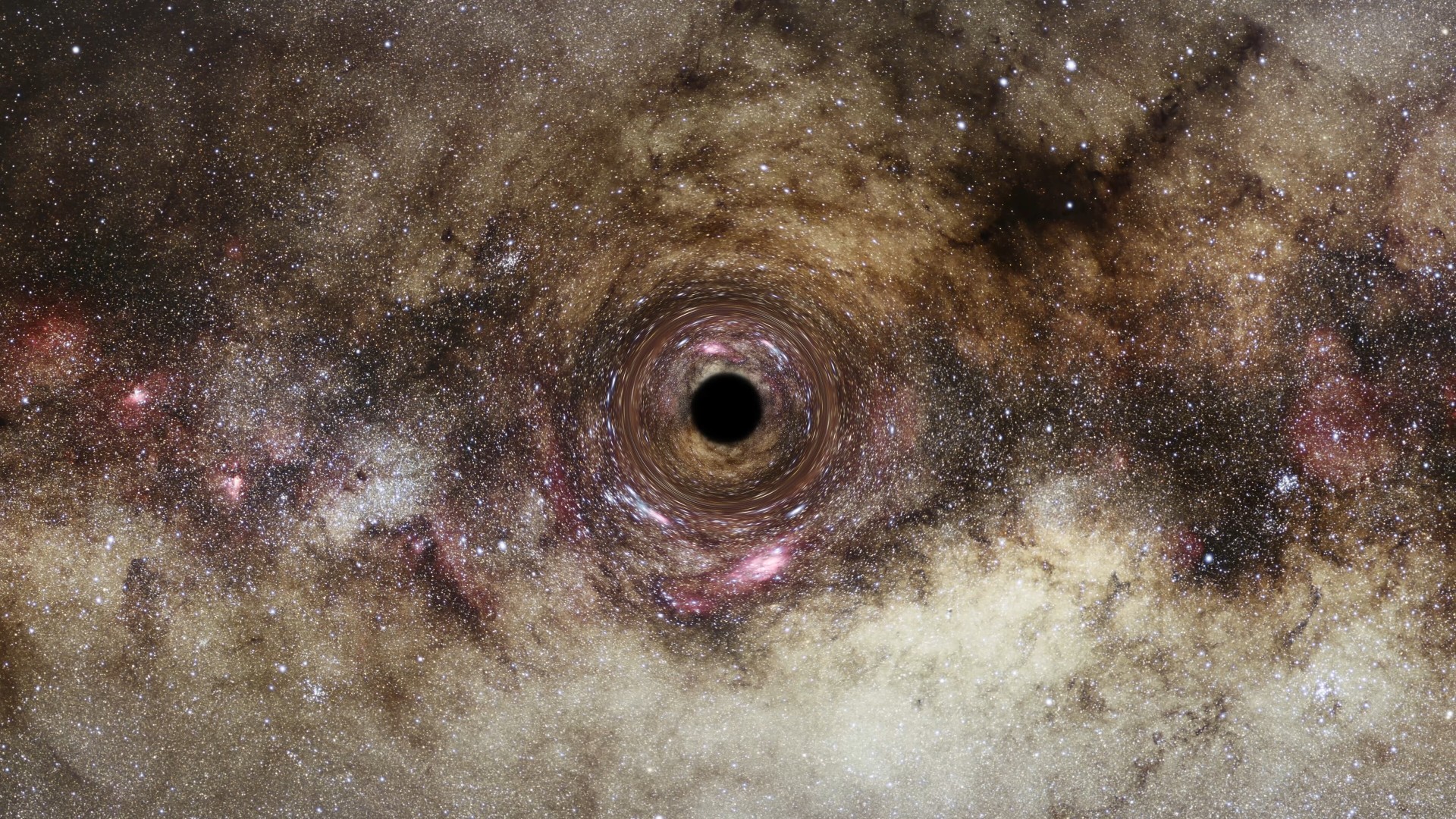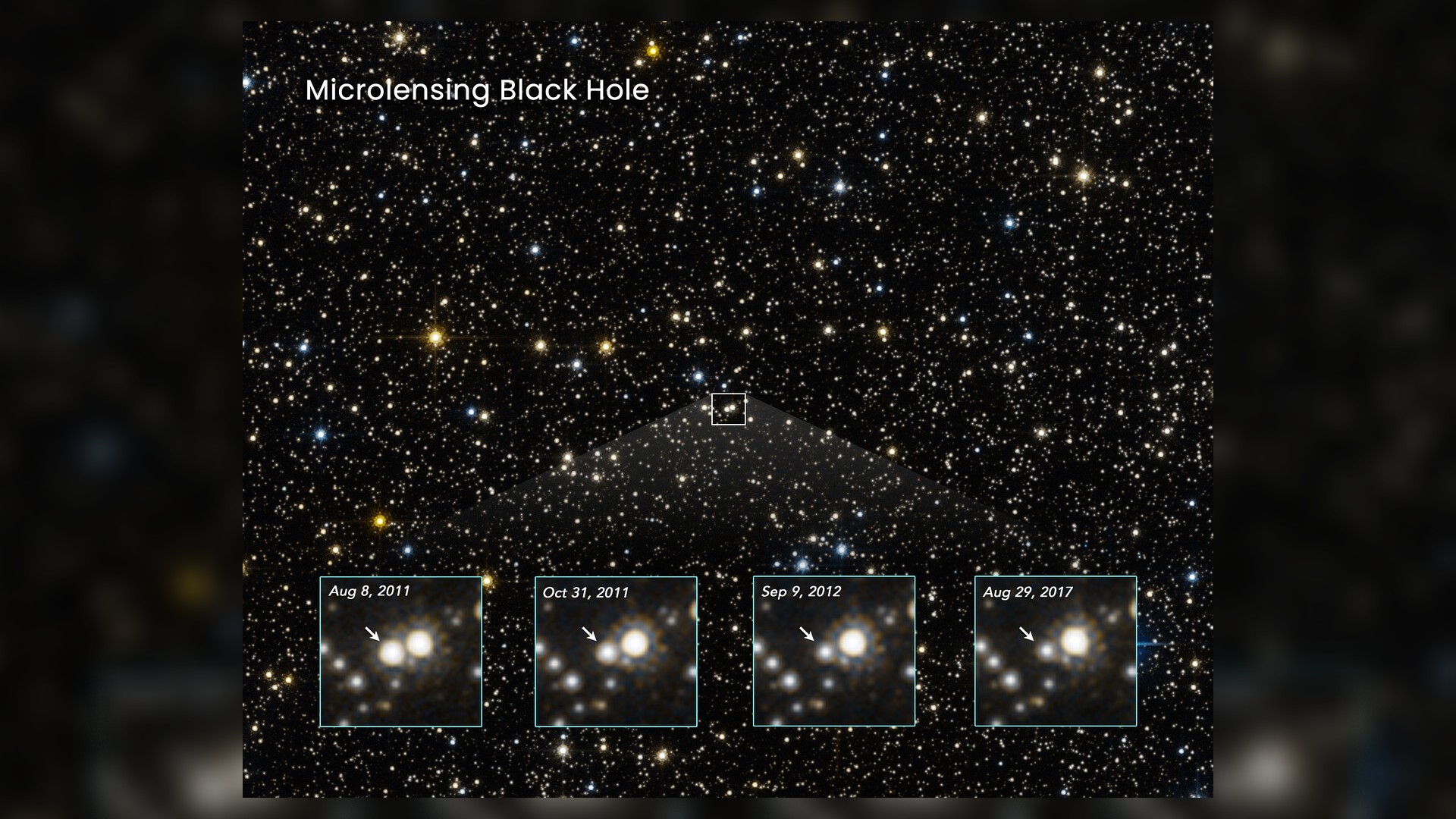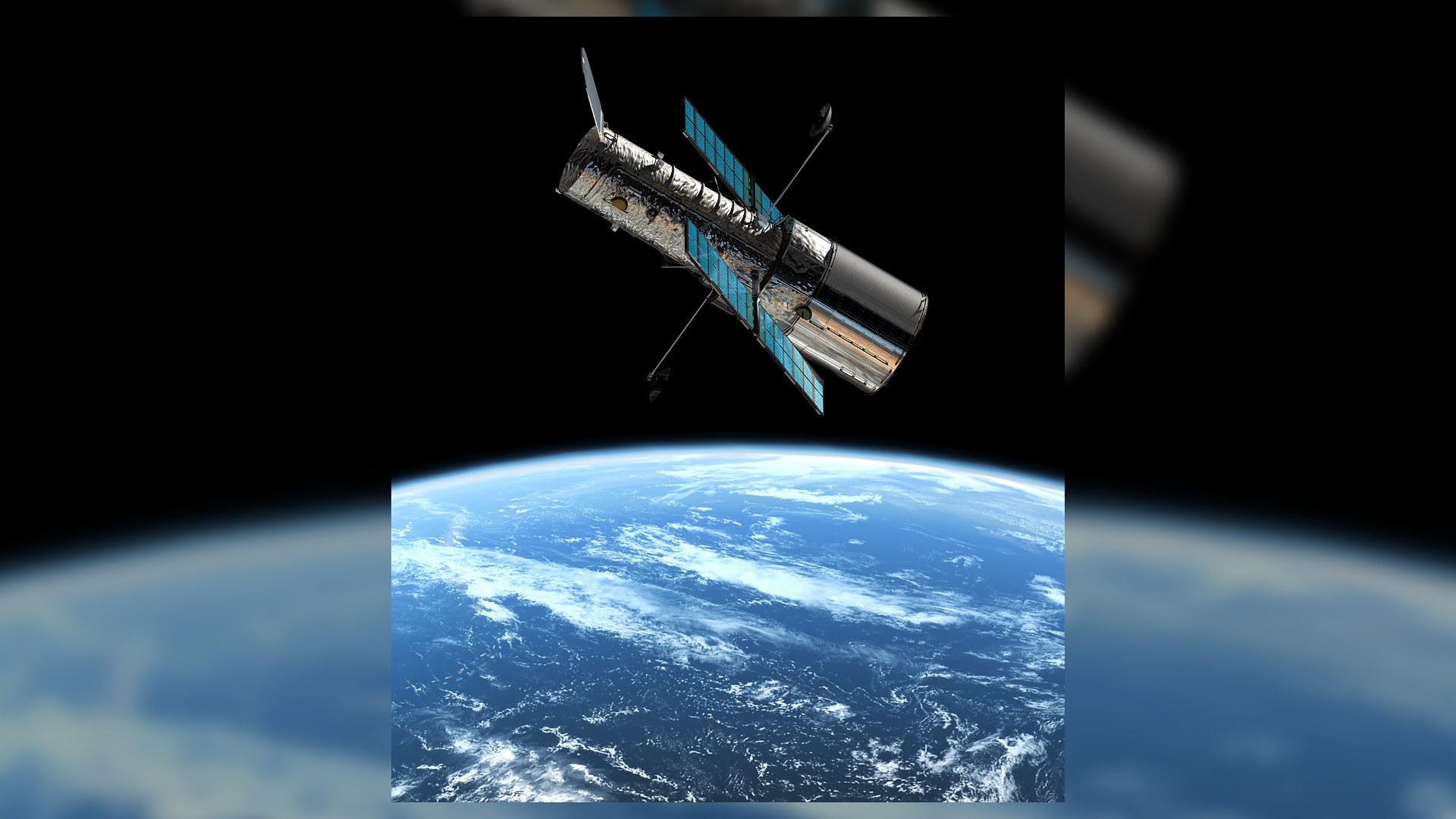Rogue black hole wandering Milky Way alone proves Einstein right again
Two teams found the compact stellar object in a spiral arm of the Milky Way directly determining its mass and velocity from the principles of general relativity.

Scientists have spotted the first ever rogue black hole wandering our galaxy. Using the Hubble Space Telescope, the team not only detected the rogue object, but also directly measured its mass — something researchers have only been able to infer in the past.
The stellar-mass black hole is located around 5,000 light-years from Earth in the Carina-Sagittarius spiral arm of the Milky Way. Usually, such objects have companion stars, yet this one is alone.
Two teams used Hubble data to make the discovery: One team was led by Kailash C. Sahu, an astronomer at the Space Telescope Science Institute, in Baltimore, Maryland; and the other was headed by Casey Lam of the University of California, Berkeley.
"There should be about 100 million black holes in our galaxy, a large fraction of which should be isolated," Kailash C. Sahu, an astronomer at the Space Telescope Science Institute and leader of one of the groups, told Live Science. "Yet, not a single isolated black hole had been found so far."
Sahu's team determined the celestial nomad has a mass seven times that of the sun. The black hole is also traveling at a velocity of around 100,800 mph (162,200 km/h) — suggesting it was launched at tremendous speeds by the process that created it.
When a huge star, around 20 times as massive as the sun, runs out of nuclear fuel it collapses. This process creates either a neutron star or a black hole as well as a supernova explosion. If the supernova isn't perfectly symmetrical, it can give the stellar remnant left behind a "kick" that sends it spiraling away from surrounding stars.
"The black hole most likely received a 'natal kick' from its supernova explosion. Our mass measurement is the first for an isolated stellar-mass black hole using any technique," Sahu said.
Get the world’s most fascinating discoveries delivered straight to your inbox.
Because stellar black holes don't emit light, astronomers use a technique called astrometric or gravitational microlensing to find them, Sahu said.

"When a star or compact object — the lens — passes almost exactly in front of a background star — the source — the foreground star acts as a lens. As predicted by Einstein's theory of general relativity, the lens magnifies the light from the source and also slightly shifts the apparent position of the source," Sahu said. "The deflection of a background star by a black hole provides a powerful method to not only detect isolated black holes but also to precisely measure their masses."
The deflections are so tiny, however, that the team needed to use the high-resolution data from Hubble to make the measurements, Sahu said."
Ground-based telescopes have detected 30,000 microlensing events thus far, and scientists have used these events to study all kinds of objects like stars, brown dwarfs and even exoplanets. The microlensing events caused by black holes last longer than those caused by other objects, however.
In this case, the microlensing event, designated MOA-11–191/OGLE-11–462 which was used to detect this black hole, which was monitored by Hubble for six years between 2011 and 2017 — can be further distinguished from the lensing effects of an intervening star by the fact that such a star would cause a change in color in the light from the background source. The teams detected no color changes during this lensing event, suggesting a solo black hole as the source.
General relativity suggests that how much the light gets deflected depends on how much the source warps space-time. And that warping is determined by the mass of the object. The common analogy used to illustrate this is placing balls of various masses onto a stretched rubber sheet. The greater the mass of the ball, the larger the dent it makes.
So by precisely measuring the amount of deflection caused by the black hole, the team arrived at an extremely precise mass measurement. The background star's image was offset from the position it normally occupies in the sky when there is no intervening massive compact object by around a milliarcsecond by the gravitational effect of this black hole. This makes the measurement made by Hubble equivalent to measuring the height of an adult human lying on the surface of the moon from the Earth.

"We also show that the black hole is single, with no companion within around 200 astronomical units (AU) [around 18.6 billion miles]," Sahu said. "Our analysis has no room for it to be a neutron star."
However, the other team of astronomers determined the black hole weighed between 1.6 and 4.4 solar masses. This second group, therefore, couldn't rule out the possibility that the compact object would be a neutron star (which is smaller in mass than a black hole) rather than a black hole.
"As much as we would like to say it is definitively a black hole, we must report all allowed solutions. This includes both lower-mass black holes and possibly even a neutron star," said University of California, Berkeley astronomer Jessica Lu, who was part of the second research team.
But, if Sahu's team is right and this is a black hole, Lu told Live Science it could help confirm the number of these objects in our galaxy that astronomers and cosmologists predict.
"We looked at five candidate black holes, but only one of them is possibly a black hole," she said. "This tells us that our Milky Way galaxy has about 100 million black holes in it. As we find more black holes, we can pin down the total number of black holes and their other properties more precisely."
The new finding not only relied on general relativity to confirm the existence of this solo black hole, but it also validates Einstein's 1915 theory of general relativity or geometric gravity and the concept of mass shaping and curving spacetime, Sahu said.
"I was surprised and impressed at the same time, by how beautifully the measurements fit the model," he concluded. "The measured deflections exactly fit, so Einstein was absolutely right."
Originally published on Live Science.
Robert Lea is a science journalist in the U.K. who specializes in science, space, physics, astronomy, astrophysics, cosmology, quantum mechanics and technology. Rob's articles have been published in Physics World, New Scientist, Astronomy Magazine, All About Space and ZME Science. He also writes about science communication for Elsevier and the European Journal of Physics. Rob holds a bachelor of science degree in physics and astronomy from the U.K.’s Open University



